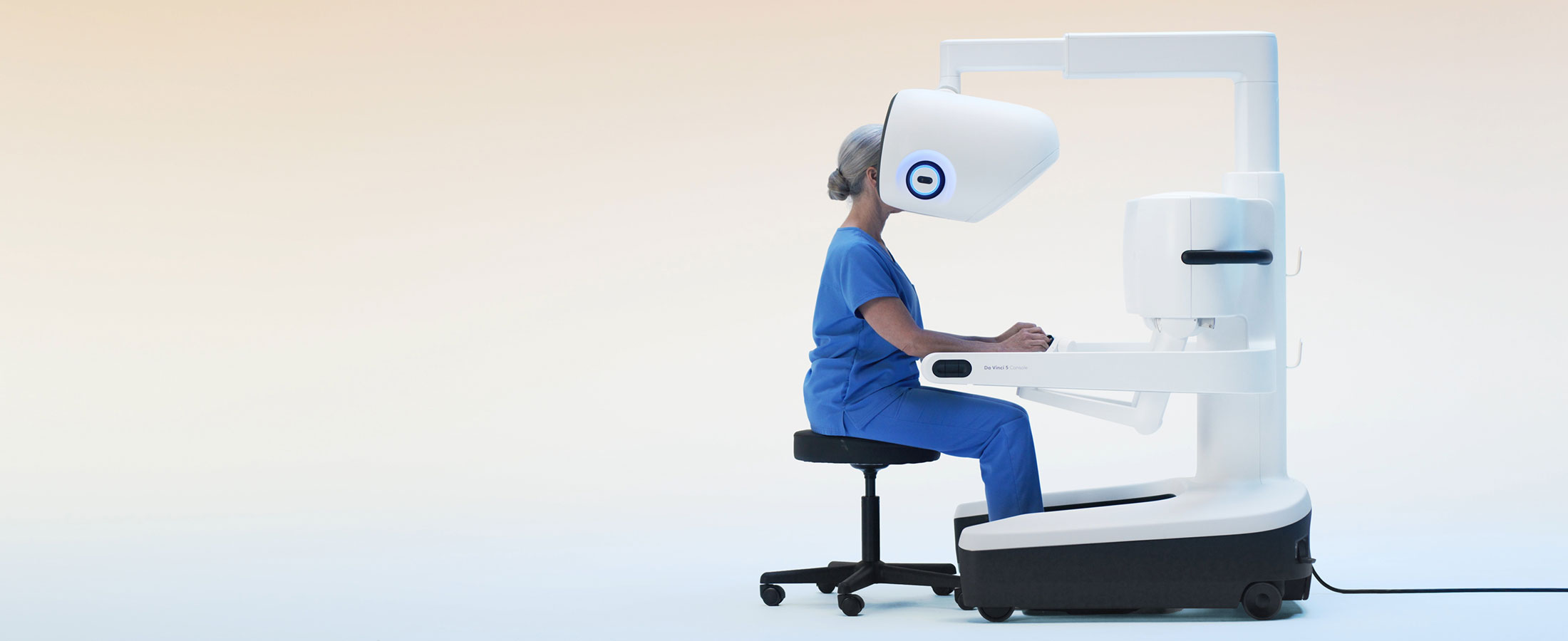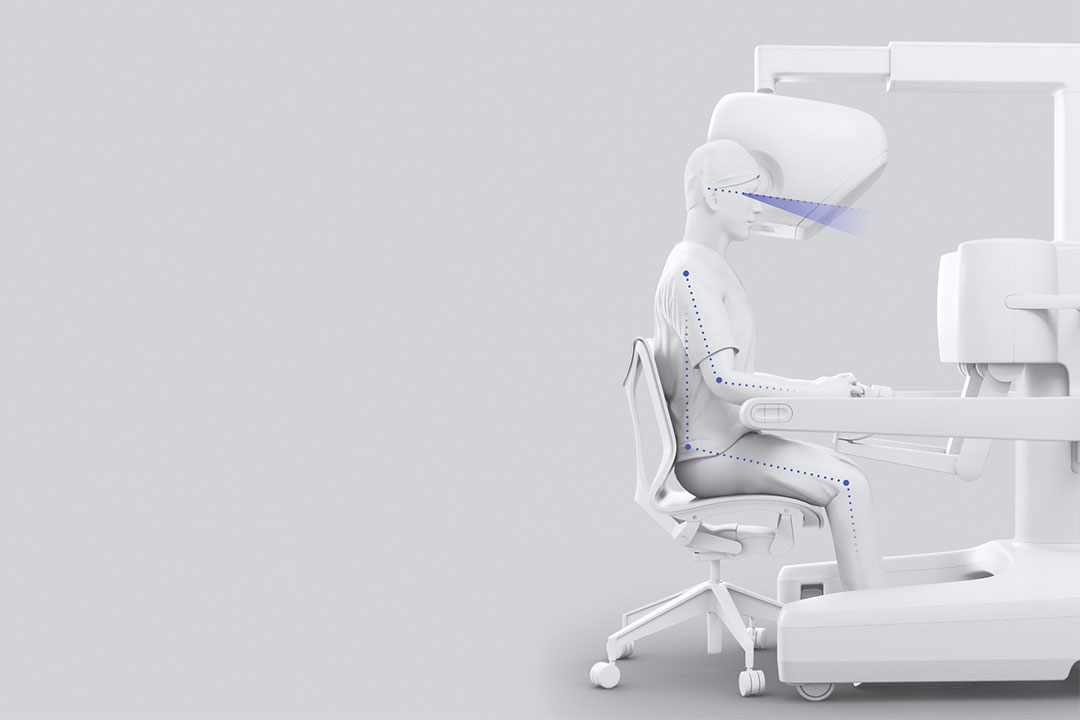

Well-conducted studies published in peer-reviewed journals are valuable for validating facts, but not all truths require studies. We know, for example, that it’s harder to stand for hours than it is to sit for the same amount of time. That self-evident fact was a driving force in developing the da Vinci system, and it may still be driving adoption 30 years later.
There are few studies that compare the long-term ergonomic benefits of da Vinci robotic surgery to open or laparoscopic surgery—perhaps because the advantages seem like common sense. While da Vinci offers a range of benefits, it’s widely acknowledged that sitting comfortably to perform surgery is easier on one’s body than standing over a patient, holding instruments for extended amounts of time.
However, there is a growing body of evidence showing the physical toll open and laparoscopic surgeries take on surgeons, including a meta-analysis that concludes surgeons face a similar prevalence of work-related musculoskeletal pain as laborers, such as coal miners.1 The meta-analysis also found that 12% of surgeons required a leave of absence, practice restriction or modification, or early retirement due to work-related musculoskeletal disorders.
“Find me one general surgeon who's been in practice for more than five to 10 years that doesn't have back or neck pain, and I will shake that person's hand,” says Dr. Pamela Lee, colorectal surgeon. “I grew up in the age of laparoscopy, reaching over the bed trying to get the right angles. It was a contact sport. I would come home at the end of the day, even from one laparoscopic case, and have back and neck pain.”
Dr. Lee isn’t alone in her opinion. In 2022, Intuitive surveyed 150 benign general and bariatric surgeons. The survey results showed that 84% of participants agreed that there is a high physical and mental workload associated with laparoscopy, and 97% agreed that using the da Vinci system reduces physical demand on their bodies when operating.2
The survey was conducted before the 2024 launch of our newest platform and spoke to the considerable ergonomic benefits of the da Vinci Xi console. Yet, as comfortable as the da Vinci Xi console is, we knew there was room for improvement.
System development takes many years and requires prioritizing innovations. When we began developing the da Vinci Xi system, we focused on redesigning the patient cart and expanding da Vinci system use to more procedures. As the number of systems installed and the volume of da Vinci procedures grew, surgeons began to suggest improvements. We listened and learned. We also employed dozens of human factors engineers so that we could direct more resources toward improving the surgeon experience while designing our next platform, which became da Vinci 5.
One goal for da Vinci 5 was to move surgeon comfort from good to great while maintaining the familiar form surgeons were used to. Another goal was to expand the definition of ergonomics to include physical, visual, and auditory comfort—as each contributes to surgeon well-being.
In all, we made over 150 design changes between da Vinci Xi and da Vinci 5. More than 70 of these modifications relate to the surgeon console, vision system, and audio system. They include unseen updates to software and internal components, along with the more visible physical changes to da Vinci 5’s form and function.
Surgeons come in all shapes and sizes—including pregnant women—and our next-generation system was designed to accommodate this broader range of body types. We made several noticeable changes to the da Vinci 5 console, adding features that include:
“The console ergonomics on the da Vinci 5 is a significant improvement,” says Dr. Afshin Bahador, gynecologic oncology surgeon. “One of the most visible upgrades is to allow the viewer component of the console to be adjusted exactly to the right angle, to the right level. It has allowed me to maintain a better posture. There is not as much strain on my neck or my forehead.”
Surgeons’ personalized comfort settings can be stored and accessed at login to eliminate the need to adjust settings every time. Says Bahador, “After the first 10 cases, where I played around with different positions, I figured out what my comfortable settings are on the viewer and put in my preferences. Now, it comes up exactly where I want it, and I haven’t had a need to change it.”
While immediate access to preferred settings simplifies surgery setup, Mark Garibaldi, manager of Human Factors at Intuitive, reminds us that the best ergonomic position is the next position. Staying in any position for too long is hard on the body. That’s why we intentionally designed the da Vinci 5 to make it easy for surgeons to adjust their posture during surgery.

“Nothing makes you more irritated than a blurry image,” says general surgeon Dr. Jorge Uribe.
That’s why Intuitive has more than 100 employees working on vision technology and why we included significant hardware and software upgrades to improve the da Vinci 5 visual experience. Among the changes are a new endoscope, controller, and light engine. The improved endoscope features a 785-nanometer laser for better compatibility with new and emerging visualization molecules and a heated tip to reduce fogging.
The surgeon console viewer offers more than twice the pixels per square inch for a sharper image compared with the da Vinci Xi. In addition, the viewer’s improved contrast ratio enables more accurate and more saturated colors, more detail in dark areas, and reduced eye fatigue.
Finally, it’s easier to fuse the left and right images on da Vinci 5, resulting in a more realistic 3D image through the new viewer, which is essential to reducing visual stress during lengthy procedures.
“The Xi had great vision compared with laparoscopic surgery,” says Dr. Uribe, “But da Vinci 5 is that next step. We have clearer vision, better images to identify the tissues, the planes, or the targets for surgery.”
Just as body sizes vary, vision is not the same from one person to another. The da Vinci 5 viewer also allows surgeons to change the endoscopic image's hue, saturation, color temperature, and white balance to personalize their visual experience.
The da Vinci 5 design includes several changes to microphone and speaker hardware and software to create a more natural and fuller sounding experience for the surgeon and care team. Larger console speakers with improved frequency response allow surgeons to hear more clearly during telepresence sessions, when connecting with remote surgeons, and when communicating with the care team. The aim of improving surgeons’ auditory experience is to reduce cognitive load, eliminate the need to pull their heads out of the console, and allow them to stay focused on surgical tasks.
Surgeons often bring up the case for career longevity when discussing da Vinci surgery. “I think in the long run, having access to robotic surgery for a surgeon will be an excellent tool to extend our careers because of how much our neck or back suffers on a long day of laparoscopic or open surgery,” says Dr. Uribe.
When talking about da Vinci 5, Dr. Bahador says, “It has allowed me to maintain a better posture. I feel like I can constantly check myself and have an upright posture.” He adds with a smile, “For an old man like me, maintaining a good posture during surgery will definitely allow me to have more longevity performing surgery. I think that's a very, very important factor.”
Career longevity matters to surgeons, of course, but when experienced surgeons must reduce their workload or retire early, it’s also a tremendous loss to patients and healthcare providers. Surgeons’ deep knowledge and skill are not easily replaced, especially when the pain and discomfort they experience is common knowledge.
Improving ergonomics won’t solve all the issues contributing to surgeon discomfort and the resulting impact on surgeon shortfall. But it may help improve surgeons’ well-being, extend their careers, and accommodate a more diverse population of surgeons to attract more medical students to surgical specialties. Those contributions to the field could make a difference to countless patients in the coming years.
Important safety information
For risks, contraindications, cautions, and warnings and full prescribing information, refer to the associated da Vinci 5 Surgical System user manual(s), or visit https://manuals.intuitivesurgical.com/market.